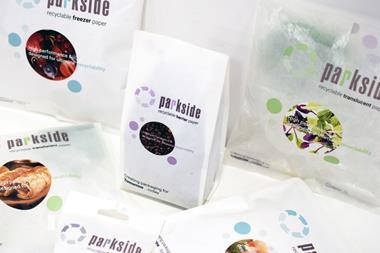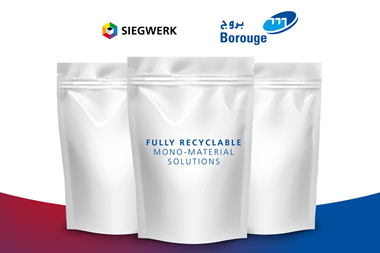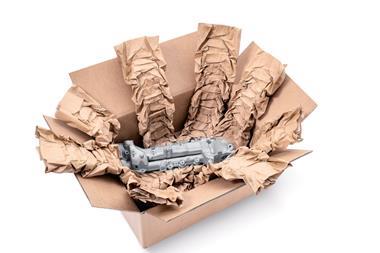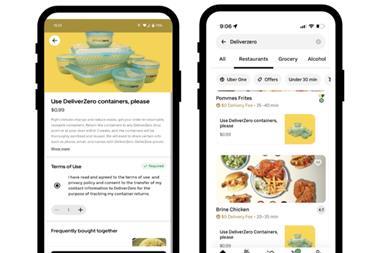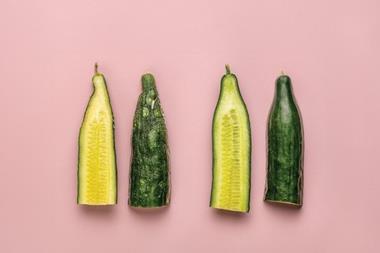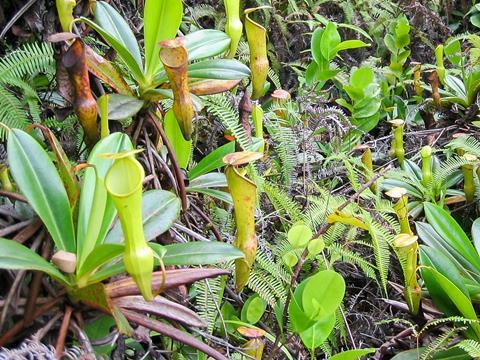
New research from Virginia Tech aims to cut down on waste – and consumer frustration – with a novel approach to creating super slippery industrial packaging.
The study, which was published in Scientific Reports and has yielded a provisional patent, establishes a method for wicking chemically compatible vegetable oils into the surfaces of common extruded plastics. Libby White spoke with study co-author Dr Jonathan Boreyko, assistant professor of biomedical engineering and mechanics, who leads the Nature-Inspired Fluids & Interfaces Lab at Virginia Tech. To design innovative materials and systems, they take inspiration from nature’s design for animals, plants, and the weather.
The technique helps sticky foods release from their packaging much more easily, but for the first time, it can also be applied to inexpensive and readily available plastics such as polyethylene and polypropylene.
These hydrocarbon-based polymers make up 55 per cent of the total demand for plastics in the world today, meaning potential applications for the research stretch far beyond just ketchup packets. They're also among the easiest plastics to recycle.
“Previous SLIPS, or slippery liquid-infused porous surfaces, have been made using silicon- or fluorine-based polymers, which are very expensive,” says Ranit Mukherjee, a doctoral student in the Department of Biomedical Engineering and Mechanics within the College of Engineering and the study’s lead author. “But we can make our SLIPS out of these hydrocarbon-based polymers, which are widely applicable to everyday packaged products.”
First created by Harvard University researchers in 2011, SLIPS are porous surfaces or absorbent polymers that can hold a chemically compatible oil within their surfaces via the process of wicking. These surfaces are not only very slippery, but they’re also self-cleaning, self-healing, and more durable than traditional superhydrophobic surfaces.
In order for SLIPS to hold these oils, the surfaces must have some sort of nano- or micro-roughness, which keeps the oil in place by way of surface tension. This roughness can be achieved two ways: the surface material is roughened with a type of applied coating, or the surface material consists of an absorbent polymer. In the latter case, the molecular structure of the material itself exhibits the necessary nano-roughness.
Both techniques have recently gained traction with startups and in limited commercial applications. But current SLIPS that use silicone- and fluorine-based absorbent polymers aren’t attractive for industrial applications due to their high cost, while the method of adding roughness to surfaces can likewise be an expensive and complicated process.
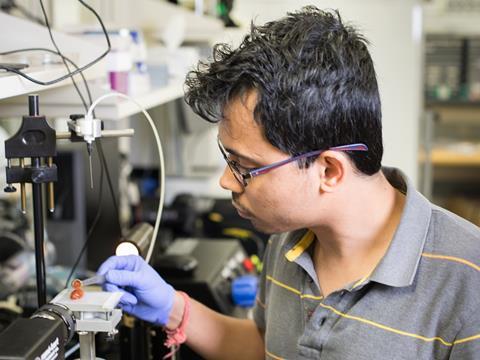
“We had two big breakthroughs,” says Jonathan Boreyko, “Not only are we using these hydrocarbon-based polymers that are cheap and in high demand, but we don’t have to add any surface roughness, either. We actually found oils that are naturally compatible with the plastics, so these oils are wicking into the plastic itself, not into a roughness we have to apply.”
In addition to minimising food waste, Boreyko cites other benefits to the improved design, including consumer safety and comfort.
Benefits of an empty package
“We tested film pouches for ketchup,” Jonathan Boreyko shares. “Those without our coating still had ketchup stuck to the packaging after one minute of draining. The exact same pouch with our modification was almost completely clean after 30 seconds.
“Not only does it drain faster, there is also less residue adhering to the film. This is especially attractive if you consider the recent push in designing recyclable materials. Less food waste clinging to the packaging means it will be easier to recycle as minimal waste adheres to the material. It provides three different motivators in one: you can save time, cost, and the environment.”
The solution is also durable according to Boreyko, who points to other tests they have conducted. “We filled a pouch with yoghurt and stored it for a month under refrigerated conditions. It remained with the same drainage flow compared to a pouch that had been freshly infused with the oil. Crucially, it also only takes around one gram of the oil for every metre squared of packaging. This is an incredibly tiny amount needed so it is extremely cost effective.
“We’re not adding any mystery nanoparticles to the surfaces of these plastics that could make people uncomfortable,” he says. “We use natural oils like cottonseed oil, so there are no health concerns whatsoever.
"There’s no fancy recipe required.”
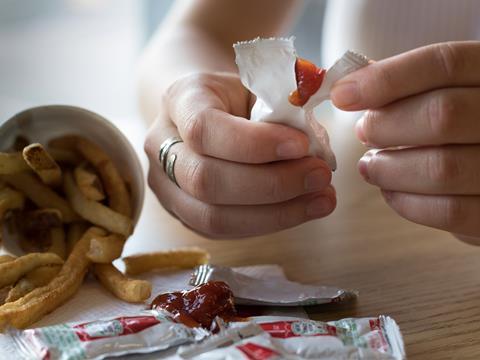
While the method has obvious implications for industrial food and product packaging, it could also find widespread use in the pharmaceutical industry. The oil-infused plastic surfaces are naturally anti-fouling, meaning they resist bacterial adhesion and growth.
Although the technique may sound very high-tech, it actually finds its roots in the pitcher plant, a carnivorous plant that entices insects to the edge of a deep cavity filled with nectar and digestive enzymes. The leaves that form the plant’s eponymous shape have a slippery ring, created by a secreted liquid, around the periphery of the cavity. When the insects move onto this slippery ring, they slide into the belly of the plants.
“This slippery periphery on the pitcher plant actually inspired our SLIPS product,” shares Mukherjee.
The pitcher plant’s innovation – which engineers are now copying – is the combination of a lubricant with some type of surface roughness that can lock that lubricant into place very stably with surface tension.
“We’re taking that same concept, but the roughness we’re using is just a common attribute of everyday plastics, which means maximal practicality,” comments Boreyko. “We aim to look with a keen eye at the world around us to take inspiration in order to solve our current problems.”
The research was fully funded through an industrial collaboration with Bemis North America. Additional co-authors of the study include Mohammad Habibi, a Virginia Tech mechanical engineering graduate student; Ziad Rashed, an engineering science and mechanics 2018 graduate from Virginia Tech’s undergraduate program; and Otacilio Berbert and Xiangke Shi, both of Bemis North America.
In collaboration with Bemis, they are looking to find the best match to put this solution into application. “It is a ‘Goldilocks’ problem – you have to find just the right size or type of packaging that is best suited,” enthuses Boreyko. “With small packaging, such as ketchup sachets, consumers apply enough physical pressure themselves to squeeze out the product, so slippery coatings aren’t vital. On the other hand if the pouch is too big, gravity does the work as it dominates the surface forces. We are looking for the ‘Goldilocks’ middle ground where the packaging is the right size for this solution to add benefit and provide strong appeal to get the product out faster and more efficiently.”
There are currently three companies testing with Bemis in order to discover the best route forward to licence the technology. It has a provisional patent and is looking for the perfect niche before achieving commercial translation.


